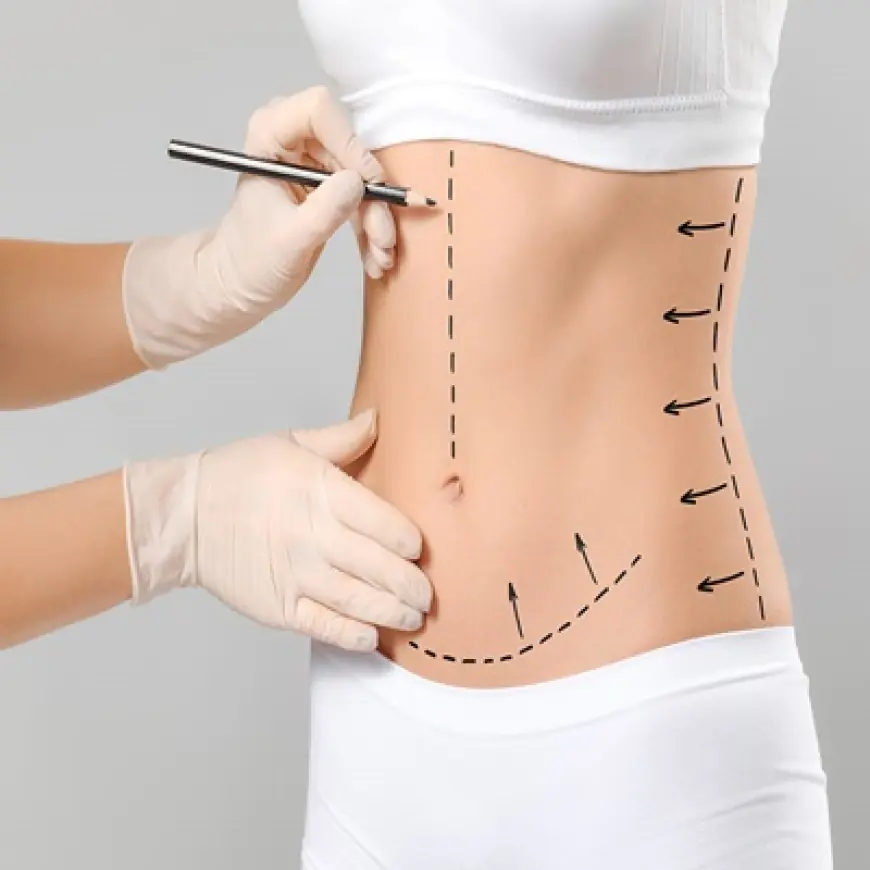Mini Abdominoplasty in Dubai: What Happens During the Procedure?
Discover what to expect during a mini abdominoplasty in Dubai, from anesthesia to stitching and aftercare guidance.
Introduction
If you're considering a mini abdominoplasty in Dubai, one of your biggest questions might be: What exactly happens during the procedure? Knowing the steps involved can ease anxiety and help you prepare for a smoother experience. This blog takes you behind the scenes of a typical mini tummy tuck — from pre-surgery prep to the moment you leave the clinic. Understanding the process is key to setting realistic expectations and feeling confident in your decision.
H1: Step-by-Step Breakdown of Mini Abdominoplasty in Dubai
H2: Initial Consultation and Planning
Before surgery, you’ll have a consultation with a plastic surgeon who will:
-
Evaluate your lower abdominal area.
-
Discuss your goals and whether mini abdominoplasty is the right choice.
-
Review your medical history and current medications.
-
Take pre-operative photos for comparison.
Once approved, you’ll be scheduled for surgery and given instructions regarding eating, medication, and pre-op routines.
H2: Preparing for the Procedure
On the day of your mini abdominoplasty in Dubai:
-
You’ll arrive at the clinic a few hours before the scheduled time.
-
The medical team will go over the surgical plan again.
-
You’ll change into a surgical gown and receive an IV line for fluids and medications.
-
The area will be marked for incision.
H2: Administering Anesthesia
The surgery usually requires general anesthesia or local anesthesia with sedation. Your anesthesiologist will discuss the best option based on:
-
The extent of fat removal and skin tightening.
-
Your comfort level and preferences.
-
Overall health and medical history.
Once you're fully sedated, the surgery begins.
H2: Making the Incision
Unlike a full tummy tuck, a mini abdominoplasty involves:
-
A shorter incision, typically 4 to 8 inches long, just above the pubic area.
-
The incision is usually concealed within the bikini line.
This smaller incision limits access to only the lower part of the abdomen, making it ideal for patients with mild skin laxity or a small “pooch.”
H2: Tightening the Muscles (If Necessary)
In some cases, if there's slight muscle separation in the lower abdomen, your surgeon may:
-
Stitch the separated abdominal muscles back together.
-
This provides a flatter contour and added strength to the abdominal wall.
If muscle separation is extensive or includes the upper abdomen, a full tummy tuck might be recommended instead.
H2: Removing Excess Fat and Skin
Once the muscle repair (if needed) is done:
-
Excess skin below the belly button is trimmed away.
-
Some localized fat may be removed through liposuction or direct excision.
-
The belly button is not repositioned — a key difference from a full abdominoplasty.
H2: Closing the Incision
After reshaping and tightening:
-
The incision is closed using sutures, skin glue, or surgical tape.
-
A sterile dressing is applied.
-
In some cases, a small drainage tube may be placed to remove fluid buildup for a few days post-op.
Surgeons often use layered closure techniques to ensure long-lasting results and minimal scarring.
H2: Immediate Recovery Phase
Right after surgery:
-
You’ll be moved to a recovery room and monitored for a few hours.
-
Once you’re fully awake and stable, you’ll be discharged the same day or after an overnight stay.
-
Instructions will be provided on how to care for your incision and manage pain.
You’ll need someone to drive you home and assist you during the initial 48 hours post-op.
H1: What to Expect After the Procedure
H2: Common Immediate Symptoms
It’s normal to experience:
-
Mild to moderate pain or tightness in the lower abdomen.
-
Swelling and bruising around the incision.
-
A temporary drain and compression garment to support healing.
Most discomfort can be managed with prescribed medication and proper rest.
H2: Follow-Up Appointments
Follow-up visits are essential and may include:
-
Drain removal (if used).
-
Suture inspection or removal.
-
Monitoring for infection or complications.
-
Progress updates and advice on activity levels.
Staying in contact with your surgeon helps ensure optimal results.
H2: Healing Timeline
The general healing timeline looks like this:
-
1–2 weeks: Return to light activities and possibly work (desk jobs).
-
3–4 weeks: Swelling reduces significantly.
-
6 weeks: Most restrictions on physical activity are lifted.
-
3–6 months: Final results become fully visible.
Remember that healing varies from person to person. Following your surgeon’s guidelines is critical for the best outcome.
Final Thoughts
Understanding what happens during a mini abdominoplasty in Dubai can help you approach the procedure with clarity and confidence. This less invasive alternative to a full tummy tuck focuses solely on the lower abdomen, offering noticeable improvements with minimal downtime. While the procedure itself is straightforward, choosing the right clinic and surgeon plays a vital role in your results.
If you're looking for a clinic that blends advanced techniques with personalized care, Tajmeels Clinic in Dubai is one of the trusted names many patients turn to for mini abdominoplasty and other cosmetic treatments.
What's Your Reaction?
 Like
0
Like
0
 Dislike
0
Dislike
0
 Love
0
Love
0
 Funny
0
Funny
0
 Angry
0
Angry
0
 Sad
0
Sad
0
 Wow
0
Wow
0


















































